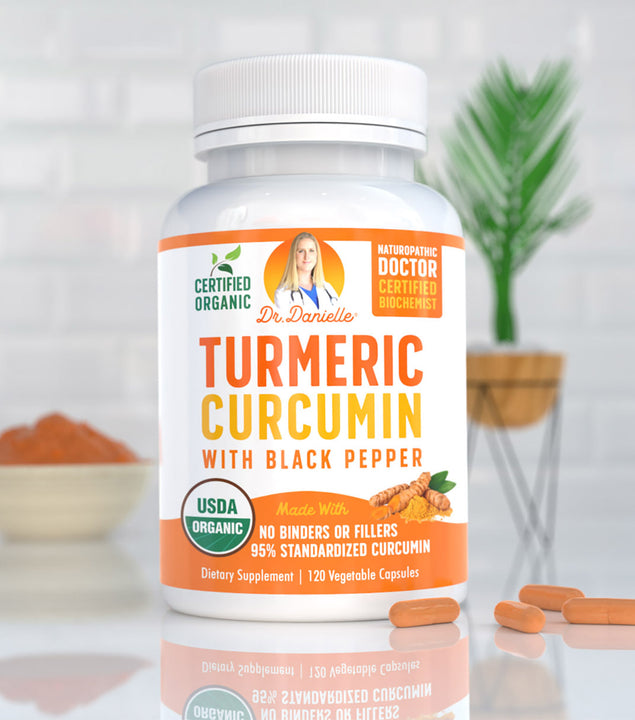Esophageal spasm refers to involuntary contractions of the food pipe, carrying food particles from your mouth to the stomach. Despite being a rare disease, it can be extremely uncomfortable and significantly lower the quality of life for those impacted. If you or your loved one has been diagnosed with this medical issue, it is important to familiarize yourself with its symptoms, triggers, management, and when to seek medical help.
This article will delve into the details of esophageal spasms, discussing its most important aspects. It will also encompass the medical and non-medical management of its symptoms.
An Overview of Esophageal Spasm - What Goes Wrong in the Food Pipe?
The esophagus refers to a muscular tube in the upper part of your gut. Connecting your mouth with the stomach, it is responsible for transporting food or drink to the stomach where it can be digested. The muscles that form the esophagus work synchronously to propel the food from top to bottom. This involves back to back contractions and relaxations, collectively termed peristalsis.
In some cases, the esophageal muscles start contracting on their own in an uncoordinated way without any food stimulus, causing esophageal spasms. These contractions, unlike peristalsis, are extremely painful and may last for minutes, making it extremely uncomfortable for people to go about their day in a normal way. The condition also interrupts normal swallowing patterns, making it difficult for food to reach the stomach.
Types of Esophageal Spasm
Esophageal spasms affect the muscles of the food pipe in two different ways. Depending on this, these spasms are categorized as:
Diffuse esophageal spasm
This includes uncoordinated muscle contractions in the lower segment of the esophagus. It usually forces already swallowed food back into the esophagus, a process known as regurgitation.
Nutcracker esophagus
Also known as jackhammer esophagus, this type of spams includes extremely strong, forceful contractions associated with immense pain while swallowing. The pain often feels like someone is squeezing in the chest. This type of esophageal spasms does not usually cause regurgitation.
Identifying Esophageal Spasm
Look out for the following symptoms if you suspect to be suffering from esophageal spasms:
- Heartburn
- Difficulty in swallowing
- Chest pain intense enough to be mistaken for a heart attack
- Regurgitation of swallowed food back into the mouth
- A feeling of having something stuck in your chest or throat
If you suspect having an esophageal spasm, get immediate medical care.
Causes of Esophageal Spasms

While it’s not clear what triggers an esophageal spasm, certain factors seem to play a role in altering the contractions in the food pipe. These factors include the following:
- Gastroesophageal reflux disease (GERD)
- Depression and anxiety
- Certain foods and beverages
- Certain treatments for cancer, such as surgery or radiation therapy of neck and chest
The following risk factors significantly increase the likelihood of encountering an esophageal spasm:
- Consuming very cold or very hot beverage or food
- A medical history of GERD
- Hypertension
- Consumption of red wine
Diagnosing Esophageal Spasm
Diagnosing esophageal spasms begins with a detailed history session. After inquiring about the symptoms, the doctor may order one or more of the following investigations:
X-ray
This test is performed after swallowing a contrast liquid.It helps take pictures of the esophagus for a closer view of its structure.
Endoscopy
This technique involves using a flexible tube with a camera at one one and inserting it into the food pipe through the mouth. The camera provides an internal view of the esophagus which can be seen on an attached monitor.
Esophageal pH monitoring
This test is performed to assess if the gastric juices from the stomach are regurgitating back into the esophagus.
Esophageal manometry
It involves measuring the contractions occurring in the esophagus after you sip some water.
Biopsy
This method involves removing a small piece of the esophagus and analyzing it under the microscope to rule out other diseases.The sample is usually taken during endoscopy.
How is Esophageal Spasm Treated?
There are different ways to treat esophageal spasm and manage its symptoms. Some of these methods are briefly described below:
Medications
The doctor may prescribe certain medications to address any underlying issues triggering esophageal spasms. For example, you might be given a proton pump inhibitor or an H2 receptor blocker if GERD is the underlying cause of your spasms. There are also many natural ways to help treat GERD naturally.
However, caution must be taken as long-term use of PPIs has been connected with various complications, such as kidney disease. Similarly, if depression or anxiety is the causative factor, you might be advised to lift your mood using antidepressants or other natural remedies.
Certain medications are also prescribed to relax the contracted muscles in the esophagus.These primarily include botulinum injections.
Botulinum Injections
Botulinum injections or botox injections are prescribed by the doctor in some cases in order to manage esophageal spasms. The protein added in these injections is taken from a specific bacterial species and helps paralyze the esophageal muscles temporarily. According to the International Society for Diseases of the Esophagus, these injections are primarily used for older adults with spasms who have been unable to benefit from other remedies.
The procedure involves sedating the patient and using an endoscope to visualize the lower end of the esophagus. Next, the botulinum chemical is inserted into the food pipe in the area where it narrows down to join the stomach. The entire process takes less than 15 minutes.
Most people are able to benefit from botox injections; however, some of them may require a repeat dose in a few months or years.
Surgical Correction
Surgery is considered as the very last resort if nothing else seems to work for esophageal spasms. At present, the following two types of surgeries are offered to control these painful contractions.
- Myotomy: This involves cutting the muscles at the lower part of the esophagus. This weakens the spasms and alleviates the associated pain.
- Peroral endoscopic myotomy (POEM): Using endoscopic guidance, a tiny incision is made in the esophagus that weakens the spasms.
Avoidance of Triggers
In many cases, it is possible to pinpoint the triggers that initiate or exacerbate the symptoms of esophageal spasms. Once these triggers are identified, they can be avoided in the future to control the problem in a better way.
In case of food triggers, a diary can be kept to remember which foods trigger spasms. The following pieces of information must be recorded in the food diary for effective prevention:
- The type of food or beverage that triggers spasms
- Whether it was cold or hot
- The amount of consumption
- Any adverse reactions to the foods, including food allergies or intolerances
Some common dietary factors triggering esophageal spasms include spicy food, red wine, and food that is extremely cold or extremely hot.
Lifestyle Modifications
In addition to taking medications and keeping a food diary, the following tips can be incorporated in daily life to control esophageal spasms:
- Maintain a healthy body weight
- Eat smaller, more frequent meals
- Quit or cut down on smoking and alcohol consumption
- Do not wear constrictive clothing
- Avoid eating close to bedtime
Natural remedies
Certain natural remedies have been found to be helpful in relieving the symptoms of esophageal spasms. These remedies include the following:
- Peppermint oil has been found to be effective in managing distal esophageal spasms by relaxing the muscles of the food pipe
- Using methanol and licorice also exert a relaxing effect on the esophageal muscles
FAQs
Is it possible to prevent esophageal spasms?
Unfortunately, experts are still trying to uncover the exact reason that triggers esophageal spasms. Hence, it might not be possible to prevent the problem altogether. Nevertheless, identifying your triggers and factors that worsen the symptoms can help you cope with the disease in a much better way.
Is esophageal spasm dangerous?
Esophageal spasms can be extremely painful and disruptive, making it difficult to swallow food. However, the condition is not deemed as a threat to the health as it does not usually progress to esophageal cancer or other serious complications. Always make sure to consult a doctor if your symptoms do not go away completely after two weeks.
When should I get medical help?
Esophageal spasms can sometimes mimic heart attack and both conditions can be very easily confused. The latter is extremely dangerous and potentially life-threatening if not treatment in time. So take no chances and always seek immediate medical care if you suffer from:
- Tightness in your chest that does not go away
- Chest pain that radiates to other areas of the body, such as shoulder, neck, or arm
- Difficulty in breathing
- Irregular or a very fast heart rate
- Vomiting and/or nausea
- Cold sweats
- Feeling weak or faint
What is the prognosis for esophageal spasm?
The prognosis generally varies, depending on how intense the symptoms are. Most patients experience minor symptoms due to these spasms and are able to maintain good control over the issue. Others require treatment to improve considerably with time.
Outlook
Esophageal spasms can be extremely painful but do not pose any serious threat to health. Several treatment options and remedies are available for patients to cope better with their symptoms and essentially prevent them. Avoiding triggers, treating the underlying cause, and adopting the recommended lifestyle changes can make a huge difference in the long run.








